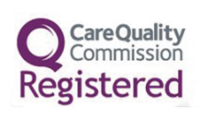Prescription drug abuse is a medical condition characterised by the unhealthy consumption of prescription drugs due to the inability to control or cease usage, despite being aware of the negative effects on one’s health and life. While there is a near-limitless number of prescription drugs open to abuse, some of the most common include opioid analgesics, stimulants, and depressants. Worldwide, with the UK included, prescription drugs are among the most abused substances and represent a significant proportion of the leading risk factors for early death and poor health, particularly in certain age groups. With such a wide variety of prescription drugs open to abuse and a rife black market, prescription drug abuse poses a significant societal challenge.
After two decades of helping people overcome all types of substance abuse, Gladstones Clinic is the ideal partner to help you reclaim your life from the clutches of prescription drugs. Our integrative and holistic prescription drug rehab programmes have helped countless people understand their addiction, break the cycle of abuse, and rejoin society clean, sober, happy, and healthy.
Ongoing prescription drug addiction can be devastating to both mind and body. Getting professional help in overcoming addiction sooner than later can significantly reduce the chances of early death and/or irreversible mental health damage.
Gladstones Clinic has a proven track record and more than 20 years’ experience in helping people recover from prescription drug addiction.









